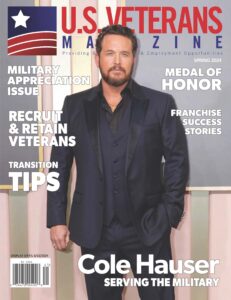Resumes provide a historical snapshot of your experience, knowledge and skills. Recruiters should be able to review your resume and understand the work you have done, the length of your experience and your capabilities within a matter of minutes.
Resumes should encapsulate your experience as briefly as possible. Quantifying your experience can make them easier for recruiters to understand.
What’s in a resume? All good resumes include some standard information:
- Contact information
- Work experience
- List of technical skills
- Education
- Job-related training
- Languages
- Affiliations
- Professional publications
- Honors and awards
- Veterans’ preference
- Level of clearance held
Contact Information
The first section of a cover letter should include your contact information, such as your name, address, preferred phone number and personal email address.
Work Experience
Your most recent experience should be listed first, and the rest of your experience should be listed in reverse chronological order. Experience typically includes the company or agency you worked for, the position you held, the dates you worked there and highlights of your responsibilities.
Unless you have not been working for very long, you have no reason to detail the jobs you held early in your career. Focus on your most recent and relevant positions.
Highlight any accomplishments or results of your work that will be relevant to the position, such as those that:
- Required extra effort
- You completed independently
- Demonstrated expertise
- Received recognition
These should emphasize results you produced, dollars generated or saved, percentage improvements in performance, the extent to which you exceeded goals in the past or organizational turnarounds you created.
List of Technical Skills
Technical skills can vary widely from methodologies to software or hardware. Technical skills do not often require explanation and can be listed by name; however, you must qualify your experience with each so that recruiters know your level of understanding of these skills. For example, a recruiter that is interested in process improvement will know about Six Sigma (a business management and process improvement methodology), so you will not have to explain it, but if you listed that, you should state what level belt you are and how long you have been practicing. The same rule applies to word processing and programming tools or hardware, such as servers.
Education
Your education information should only include pertinent facts such as:
- Name of the institution where you earned your highest degree
- City and state of the institution
- Date you graduated or received the degree
- Specific degree earned
- Minors or double majors
If you attended college or a technical school but did not receive a degree, you should state how long you attended and your field of study. However, you must be clear that you did not receive a degree. If you did not attend college or a vocational school, you would include information about your high school education or GED. List your most recent degree first. If you are still enrolled in an institution, list it. Do not forget to include the anticipated date of graduation and the degree expected.
Job-Related Training
You have most likely received a significant amount of job-related training through the military. Provide details on the training and courses that you took throughout your career. List only the training that has enhanced your experience and skills, which will be of immense value in your new position. If the course title is not descriptive or is unfamiliar, summarize or briefly describe the course to potential resume evaluators. Don’t assume the resume evaluator will understand the terms in your resume. If there is any doubt, convey the meaning.
Languages
If you include languages on your resume, state your level of fluency (such as novice, intermediate or advanced). Do not overstate your level of proficiency. If your fluency is very limited, it is probably not worth listing the language.
Affiliations
Your professional affiliations can relate your past work and your current job profile if you are working in the same field. On a resume, they inform recruiters that you have a professional interest beyond your day-to-day job.
Emphasize current contributions and provide some details to explain your abilities within precise areas. It is recommended that you not include any political affiliations since hiring managers or an agency may fail to judge you enthusiastically. If you decide to include them anyway, be tactful in describing your involvement.
If you have a lot of affiliations on your resume, recruiters may view you as an overachiever. Consider including only the most relevant ones or splitting them into career-related and community-related categories.
Professional Publications
List your publications in reverse chronological order. Only list those publications that relate directly to your career goal or the position you are applying for. Potential employers may attempt to track down your publication, so make sure the titles and your authorship are verifiable before including them.
References
Be prepared to provide references if requested. References are typically people who can verify your employment and vouch for your performance. A potential employer always thinks that a provided resume is up-to-date. If your references are not up-to-date when the resume is reviewed, your out-of-date list may harm your credibility or frustrate your recruiter.
Honors and Awards
Awards can tell a potential employer that previous employers or other organizations valued your accomplishments. The fact that you or your team received formal recognition for your efforts is a good indicator of your skills and work ethic.
Additional Information
Any information that does not fit in the other resume subject areas but is worth highlighting for a recruiter because of its relevance to the position or because it helps you stand out as a qualified candidate can go in this catch-all area.
Source: VA for Vets



